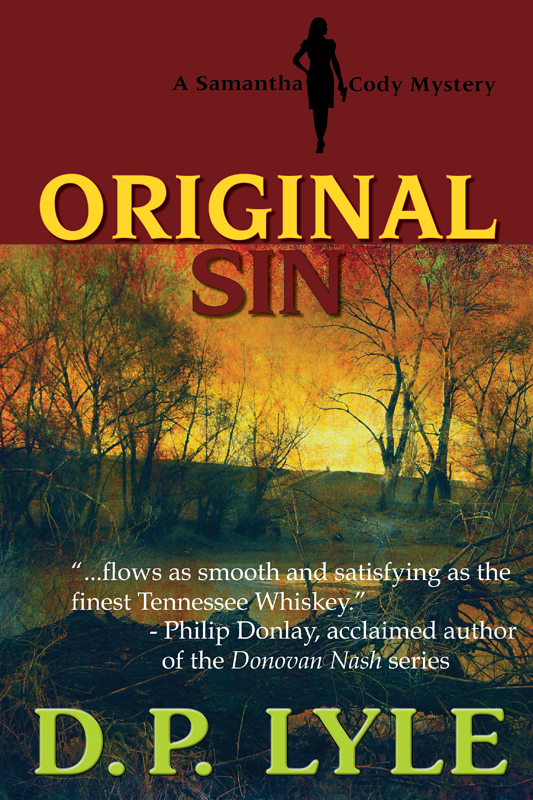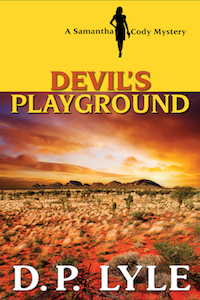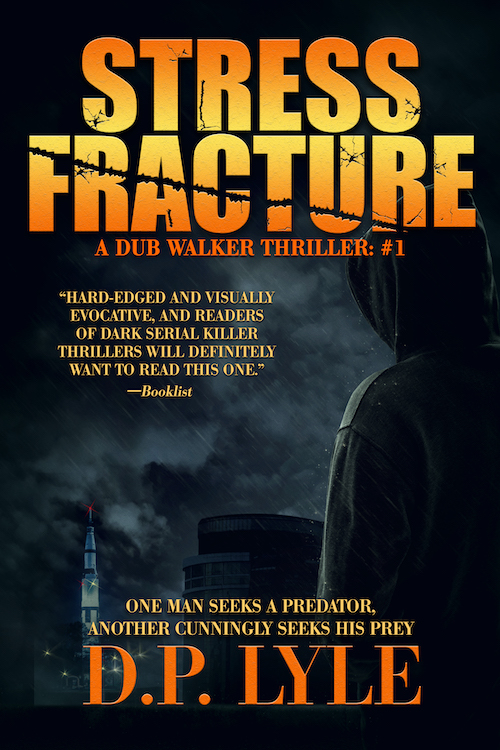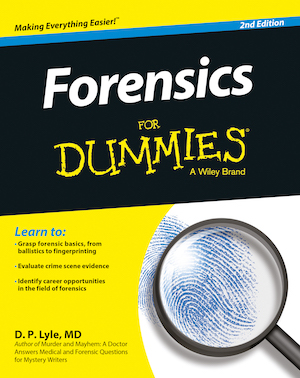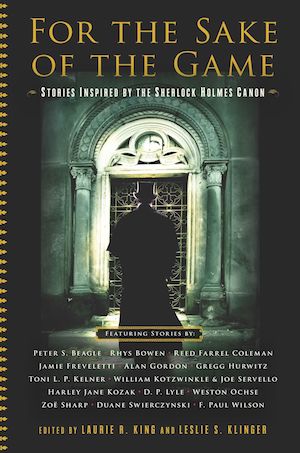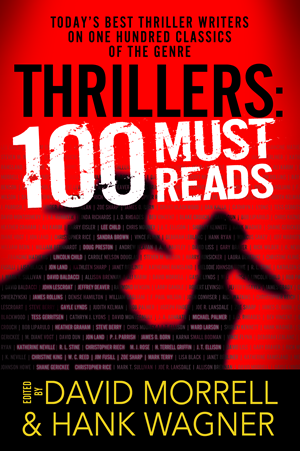
This show originally aired on Crime and Science Radio on 7-26-14. This transcript is courtesy of Suspense Magazine.
To listen to the original podcast go here:
http://www.dplylemd.com/csr-past-details/dr-michael-tabor.html

Dr. Mike Tabor: Taking A Bite Out Of Crime
Dr. Michael Tabor has a long list of talents, from being a respected suspense/crime author, to a doctor, and a public speaker. Beginning his career as a family dentist, the good doctor’s work took a unique turn in 1983 when he delved into the highly specialized field of forensic dentistry. Being one of only a handful of forensic dentists in the U.S., Dr. Tabor became a highly sought after expert in this field, performing identifications/examinations on homicide victims, as well as aiding police officers and medical examiners in the prosecution of thousands of crimes.
Dr. Tabor sat down with D.P. Lyle, MD and Jan Burke, to be interviewed on “Crime & Science Radio.” He talks in-depth about everything from his early background and how he got into the field of forensic odontology, as well as his work on some high-profile cases, such as the autopsy of James Earl Ray. He speaks poignantly about his work helping to identify victims of the 9/11 tragedy, and tells readers what to expect from his upcoming titles.
D.P. Lyle, MD (D.P.L.): Welcome Mike. Being a forensic odontologist (which is a big word for dentist), can you tell people what attracted you to this field in the first place?
Dr. Michael Tabor (M.T.): In addition to dentistry I also have a passion for football, and for 25 years I have been a back judge for high school football in Tennessee. One day, while in my officiating role, our new state medical examiner at half-time came up and said, “You know, I’ve got an interesting body that’s just been pulled out of the Cumberland River here in downtown Nashville that has numerous gold fillings in their teeth, and I have no clue where to begin. Would you like to help me?” And 20-odd years later, here we are on “Crime & Science” radio. True story.
D.P.L.: There’s a big difference between doing fillings and extractions in the office and then moving into forensic odontology, did you have any special training (like they do now) at that time; or did you just kind of learn by the seat of your pants the things you needed to know and how you were going to approach this field?
M.T.: Actually, there weren’t many training programs at that particular time. I had the good fortune, however, to be mentored by three good friends—all of whom were giants in the field then. One, Doctor Richard Souviron, in particular, I had the pleasure of meeting when he served as my opposing expert witness in the first bite mark case ever admitted into a Tennessee court of law. This was just a few years after he testified in the Ted Bundy case, which literally made this “David vs. Goliath” in the Nashville court case. What was strange about it is that afterwards we became the best of friends and have enjoyed a great relationship since then.
Jan Burke (J.B.): You’ve obviously had a long and storied career. I wanted to bring up that you have served as a past president of the American Board of Forensic Odontology. It is clear you’re dedicated to high standards in your field. Could you tell us a bit about the recent study/report by the American Academy of Forensic Sciences that spoke about how to maintain these high standards? In other words, what’s in and what’s out in forensic odontology?
M.T.: I have to start by saying I certainly respect the Academy and certainly appreciate all suggestions they have for the field of forensic odontology. It’s important to note that forensic odontology is not a specialty of dentistry, it is a specialty of forensic science. When it comes to jurisprudence, everyone from toxicologists to document examiners…we all want to get it right. We want the best possible chance of solving a mystery using our specific field. We have many recognized disciplines within the realm of forensic science and anytime the American Academy comes out with concerns, ideas or suggestions the American Board of Forensic Odontology, as well as the odontology section of the Academy, pay very close attention.
We’ve made several changes when it comes to the ways our diplomates consider and come up with their opinions for courtroom testimony. We’ve seen roughly 10 cases or so during the last few years that involve people on death row, who have been found guilty of a capital offense, have their conviction overturned since the refinement of DNA analysis. In other words, the wrong opinion was given at the onset and a person was falsely imprisoned as a result. We still maintain that bite mark analysis, when used by a properly vetted expert—and that’s the key term right there, a properly vetted expert witness—adds value to the case. Yet, we are going a step further now, because we want to make sure that we don’t have ten more of these cases appear over the next decade.
I think one thing that happens, take The Innocence Project, for example, is that people are quite quick to point out these ten cases and fail to mention scores and scores of other cases where bite mark evidence was used properly, and as a result was a key tool in achieving the right verdict that the jurors came up with. We pride ourselves in knowing this very small niche of forensic science, but there are lots of other witnesses, evidence, and factors that jurors have to consider. It was not the forensic dentist that put this person on death row. Jurors will also review the medical examiner report and one side will have an expert stating that a death was the result of, say…shaken baby syndrome, while another well-respected expert offers the opinion that it is not SBS but death by SIDS, for example. Then jurors have to decide if this is a homicide, suicide, and the list goes on. We recommend that every board certified forensic odontologist seeks a second opinion before trial, and we’re really trying to make sure we adhere to the recommendations and principles the Academy has suggested.
D.P.L.: Can you speak about what is required in order to enter the field?
M.T.: Interestingly enough, only knowledge in the profession of dentistry and an interest in the field of forensic odontology is required. Most of my training, and even up to this day, a lot of it has been on-the-job training. I am proud to announce for the first time however, on this show, that we are getting ready to change that because the field is linking arms with forensic anthropology. And, what better place to have it done than at The Body Farm in the University of Tennessee at Knoxville. Starting soon we will offer the first post-graduate degree program in the U.S. where you can earn a masters degree in forensic human identification. We are actually linking arms because we do have a lot of overlap between the fields; forensic anthropology focuses more on age, sex, and race, whereas odontology deals with comparing a known to an unknown, which is how forensic dentistry really started out. There are 32 teeth in the human body and each tooth has five sides, the possible combinations according to what the math professors tell me is five to the thirty-second power which equals a number bigger than the actual number of people living on earth. So let’s just say that the field is going to be around a long time.
As these programs grow and develop, hopefully forensic dentistry will increase and there will be more courses available to take. Right now we have one in San Antonio and another in Detroit, with a new one starting in Las Vegas. But this in Knoxville will be the first of its kind, and not just for dentists. This is available to dental hygienists, crime scene investigators—anyone with an undergrad degree who wants to further their education in human cadaver identification. We are pretty excited about it.
J.B.: That is worth being excited over, and we are honored that you chose to announce it here. Now, some people are not really sure what a forensic odontologist does, so can you give us a brief overview of what the work entails?
M.T.: I’d be happy to. First off, most all major cities are affiliated with or have a certified forensic odontologist on staff. We only have 105 in the U.S., so there aren’t a whole lot to go around. But the National Board of Medical Examiners, which is the credentialing service for all medical examiner offices in the U.S., recognize the importance of having a forensic odontologist in their morgues. As a result, when each office has to get recertified, one of the points the Board checks on is whether the office is affiliated with a board certified forensic odontologist. If they’re not, they get a ‘ding’ and you can only have so many of those before losing your credentials. It’s like a medical school not being accredited with the AMA; they might just as well not exist.
When it comes to the job requirements, we compare knowns to unknowns. Basically, there are three ways to identify a person: DNA, fingerprints, and dental records. So, say we have a body brought into the morgue. We have to know from the investigator, before we can lend some credible info, who they think the person might be. If they have no idea, we start at the end of the fence and work backwards by making a chart of each of the 32 teeth, and each of those five sides and record any type of fillings there are, what surfaces have been fixed or altered, etc. We x-ray and photograph and make a complete record, just like when it’s a live patient. Our next step is to enter this information into NCIC or NAMUS. These are national databases, with NAMUS being accessible to the general public and NCIC being for law enforcement officials only. These databases record any and all distinguishing characteristics on a body that is currently being held in medical examiner’s offices. We keypunch in our data which goes into national and international databases and searches for a match. It also calls up information on missing persons across the country to attempt to locate a match.
More often than not we are trying to identify victims from auto accidents, house fires, plane crashes, etc., where the body has been harmed to the point where age, sex and race cannot be determined. That’s where dentistry becomes so valuable. Teeth are virtually indestructible, yet even if a body has been lying on the bottom of the ocean for a hundred years, when they are brought up the teeth will look exactly the same as the day they died. You can’t say that for fingerprints or DNA. We can compare the knowns that come from teeth analysis with the unknowns and use this to identify a victim.
D.P.L.: You mentioned anthropologists earlier. Are both forensic dentists and forensic anthropologists called out to a crime scene at same time? Do they work in tandem?
M.T.: When it comes to bones that are discovered, say, in the woods, often the anthropologist is called upon first. They are such bloodhounds they can find things no one else can. We wait and take the info the anthropologist gathers, such as the person was six-foot-two, African American, male, etc., and we will use that to try and match their data with a missing person. From then on, we work together.
Along these lines, the book I wrote is the story of the most bizarre case I ever worked on in my career, which was actually at The Body Farm in Tennessee. I was working there with Dr. Bill Bass (the founder), and Dr. Murray Marx, and his contingency. It was there that they were actually able to develop the age, race, and sex characteristics of a body yet it still remained a John Doe for decades. At the farm what they developed was a system/program called TSD (AKA: time since death.) They have studied and honed their skills for identification by taking a body that has been donated to science and placing that body in a field (inside a protected area, of course), subjecting the body to all environmental conditions. They study and photograph the body on a regular basis to determine even more information such as, what it looks like in the decomposition process (i.e., the insects, the maturation levels of the insect larvae). They record wind speeds, humidity, temperature changes, etc., and from all that they are able to provide a very valuable tool to investigators; in addition to the norms of age, sex, and race, they are able to determine how long this body (or discovered bones) has been there. The time since death is very important to everyone from investigators to crime writers.
J.B.: You were involved in identifying the 9/11 World Trade Center victims. How did it come about that you got involved with that? What did you do as part of the team?
M.T.: That was the year I was serving as president of the American Board of Forensic Odontology. A member who held the same position in NY that I held in TN spoke to me and addressed the enormity of the aftermath. Death investigations were going on just like always, before and after 9/11, and these facilities were quite taxed. Quite a large percentage of experts volunteered their time to assist New York’s medical examiner with this task of trying to identify the victims.
We first worked to accumulate accurate flight manifests so we could attain various medical and dental records for those on board the planes. When you reach a number of victims north of 25 to 30, you need to use a computerized system to organize records and data. We utilized a software program called WIN ID that was written by one of our diplomates, Jim McGivney. We entered all the information we collected and the antemortem (before death) records into the database, and began identifying remains. We had information from the manifests, port authority records, data given from wives and husbands whose significant others didn’t come home that night, firefighters and police officer records, etc. We also had people who jumped from the buildings, choosing to end their lives instead of having to experience the inferno that would have taken them. We ended up identifying approximately one-third, 1,000 out of the 3,000 who died that day, with many being identified from just the dental records.
We had rehearsed being on what is called a Mass Disaster Dental ID team, and learned how we would grid off an area and how we would set up ID logistics if a 747 went down and hundreds of people perished. There were days, if you remember, where we didn’t know if we were going to find 3,000 or 30,000 people in the aftermath. In fact, if the planes had hit 30 minutes later, the total would have been even more horrific. It took us approximately 11 months to a year before we had the chance to sift through each bit of evidence and enter it into the postmortem database and let the computer do its’ work. Amazingly, we were pleased to be able to identify a third of them. People will ask, “How come the other 2,000 weren’t identified?” But, to be honest, some just didn’t even exist; they were vaporized by the crash. And, as you might imagine, there was a lot of comingling of remains…but we were (and are) just trying to get it right. To put this into perspective, jumbo jets have two black boxes on board. These are nearly indestructible and yet no black boxes were recovered.
J.B.: The 9/11 tragedy was horrific. How did it effect you personally?
M.T.: Well, I have given about two or three talks a month for the past 13/14 years. Yet it took quite a while for me to even be able to talk about this without getting choked up. We have little to no training when it comes to dealing with the emotional impact of such a tragedy. I have seen lots of things in my 39-something years and most have been pretty ugly. But I never saw or experienced anything like 9/11 that stayed with me, and still won’t go completely away.
Buddies would talk about PTSD and their time in Vietnam and I had a hard time getting my arms wrapped around that emotionally. But after spending time at Ground Zero, I can say that it is for real. We were not used to dealing with this; having to walk through a sea of people holding up pictures of their missing husbands, wives, or their only sons and daughters…people coming up to us, pulling on our arms and saying, “Please help me.”
After our work was done, we were told to prepare ourselves for when we returned home and our close family members commented on changes they saw in us, changes in our spirit. And they were exactly right. They did send us all through a psychological debriefing workshop before we left. Part of it to address the enormity of the situation and part was to help us deal with the emotional aspects that we were ill-equipped to deal with. The last thing is that red, white, and blue that still flutters among all of us and having to deal with the fact that a foreign entity came to our country and did that to us.
I had a dream many times in that first year after 9/11 where I was driving on a certain road in Nashville and saw a 727 going, nose-down, behind a hotel. I woke up when it hit the ground and exploded. This is a prime example of PTSD. Like opening the body bag and seeing the firefighter still clutching his axe…it gets to you.
D.P.L.: Sobering. Thank you. I hope everyone appreciates you sharing that information. Moving on to your writing, you worked with Dr. Cyril Wecht on a case with quite an infamous name attached to it, that of James Earl Ray.
M.T.: I’ve actually worked on two cases with Cyril. My third book “Grave Mistake” will focus on one of those. I think the one you’re referring to, however, is the forensic autopsy of Ray. In a nutshell, Ray was serving his life sentence after confessing, recanting, re-confessing and re-recanting to killing Martin Luther King, Jr.
He actually died in prison of Hepatitis C that he had gotten from being stabbed by a fellow prisoner with a broken Coke bottle. Tennessee law states that if you die in prison you have to have an autopsy done by the state medical examiner. I was called one day by our local M.E. and asked to come down to the office. I thought it was a little odd, needing me to confirm the identity of someone everyone already knew. Of course, just a few years before, there were so many naysayers and conspiracy theorists dwelling on the JFK assassination that a court order was finally gotten to exhume the body of Oswald so it could be re-identified using forensic dentistry. Oswald was in the military and had records on file, so this wasn’t a difficult process. Ray’s family had decided that as soon as the autopsy was complete, they would cremate the body. The family hired Dr. Wecht to oversee the autopsy on their behalf.
The second case I worked with him on was a tragic accident; a van holding six prisoners was in an accident and all were burned alive when the van caught fire. A wayward medical examiner ended up misidentifying bodies based on seat locations. These victims lived all over the United States, so Wecht and I worked together to sort out which body really belonged to which family. It is a true puzzle that we had to solve backwards. It was a wonderful experience getting to know him, work with him, and I cherish the time I get to spend learning more from him.
D.P.L.: Time to talk about the book. Please tell us about “Walk of Death.”
M.T.: “Walk of Death” came from me finding my most favorite thing to do in the world, write down exactly what happened on a case.
I had a cold case murder that I worked on for over a decade before finally solving. It began in 1998 and wasn’t solved until Christmas of 2010. That’s when my wife told me, “You’re gonna write a book on this.” It was actually bizarre. You cannot make this stuff up. The case involved a staged death utilizing a pair of killers, a hitchhiker, and a life insurance policy. The plan gets a little sloppy, and law enforcement does not know who is buried in a grave. The next ten years are spent trying to put a name with an unknown face.
This was the first time in a Tennessee court of law (and I believe in the entire U.S.) where a jury has to find someone guilty, without anyone in the courtroom knowing who the victim is. That will get you an upside-down jury. After all, you usually have someone weeping, yelling, angry about killing “Uncle Joe,” and talking about the family. Here, you have a body but it’s very hard to get emotional sympathy from jurors. Using forensic dentistry helped solve the crime, but I can’t tell you the whole thing or you won’t want to read the story.
J.B.: And you are now working on your third title?
M.T.: Actually, I just finished the second one which is called “Out of the Darkness” and involves a bite mark case in a murder trial that I testified at in Arkansas, and the controversy around the evidentiary value of that bite mark evidence in this particular homicide. The third, based on the case with Dr. Wecht, will be “Grave Mistake.”
Talk about sending readers running to the library. Dr. Michael Tabor is an unforgettable interview; a man whose background and incredible work on cases has not only created amazing thrillers, but has also made the realm of forensic odontology one of the most fascinating to learn about. For more information, check out http://www.drmiketabor.com or listen to other fantastic interviews from “Crime & Science Radio” with Doug Lyle, MD. and Jan Burke at https://crimeandscienceradio.com. ■
Originally aired on Crime & Science Radio; July 2014.
Subscribe to Suspense Magazine: http://suspensemagazine.com/blog2/subscribe/







